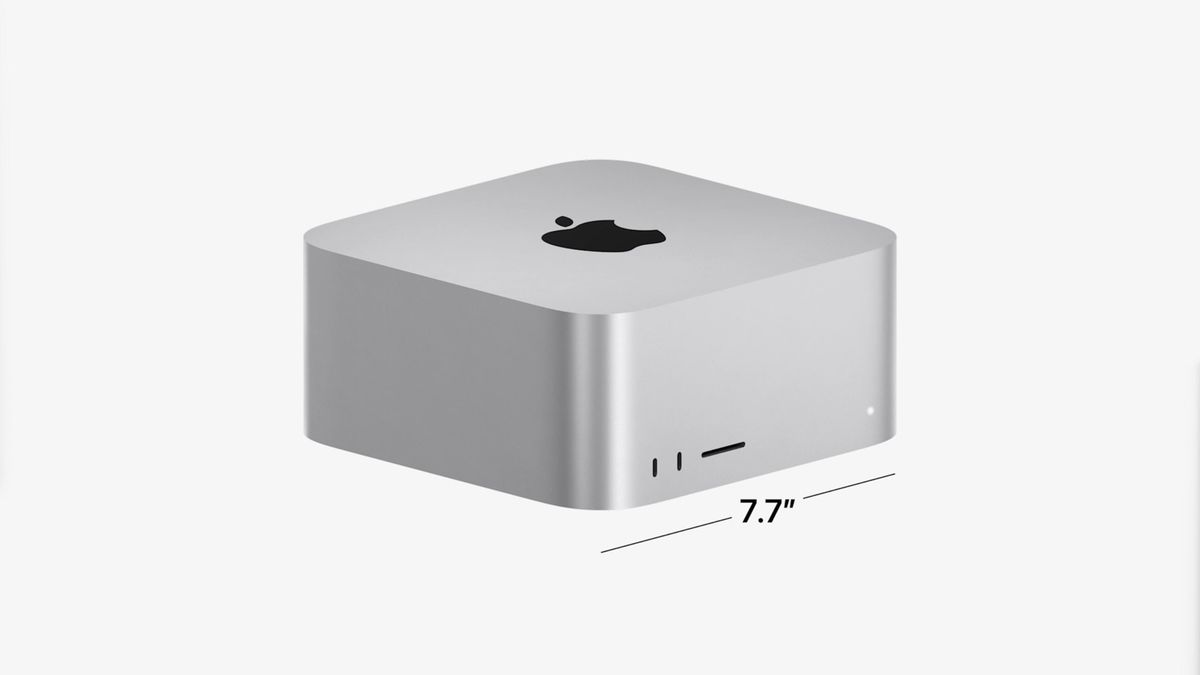Apple’s M1 Pro and M1 Max chips were a GPU-shaped warning to Nvidia and AMD last year, and now Apple has cranked up the heat with its new M1 Ultra. Apple claims it will rival Nvidia’s giant RTX 3090 graphics card, the fastest GPU on the market right now. But how does Apple think it can beat an RTX 3090? It turns out, last year’s M1 Max has some secret sauce inside.
Apple’s new M1 Ultra is a surprising combination of two M1 Max dies, fused together to create a single powerful chip. The M1 Max has a secret high-speed interface that allows Apple to combine two chips into one. The result is an M1 Ultra chip that has double the CPU cores, double the memory, double the memory bandwidth, and most importantly, double the GPU cores.
Apple calls this combination UltraFusion, and it’s effectively Apple’s own 2.5D chip packaging implementation. The chip industry has been turning to chiplets to design processors for years, with AMD’s Zen 2 and Zen 3-based Ryzen chips leading the pack for modern chiplet designs and until recently, performance. Apple rivals like Intel, Samsung, and Qualcomm are in the early stages of working together on a new standard that could let companies build processors out of Lego-like chiplets. Apple is ahead of the pack with a chip that fuses together two separate GPUs.

Nvidia and AMD have built similar solutions for combining two GPUs in the past, but as AnandTech points out, it looks like Apple has solved the holy grail of multi-GPU design here. Apple’s UltraFusion tech supports an impressive 2.5TB/s of bandwidth between the two M1 Max chips. That’s a huge bandwidth jump over what Nvidia offers with NVLink for SLI or AMD with Infinity Fabric, which are used as high-speed links between GPUs.
Apple’s high-speed link means the two separate M1 Max GPUs will be shown as a single GPU in macOS, allowing apps to easily tap into the combined power. That should mean apps and games don’t have to do anything special to utilize the power of the M1 Ultra, whereas games have had to natively support Nvidia’s SLI implementation on Windows in the past to see any performance improvements.
Nvidia has practically killed off multi-GPU support with its RTX 30-series, with only the RTX 3090 offering NVLink support. Combining two RTX 3090s together for productivity or gaming rigs has hugely mixed results, though. Games that natively support SLI will offer performance benefits, while most won’t offer any uplift and some will even see a performance drop.

The RTX 3090 is the fastest GPU on the market right now — until Nvidia finally delivers its delayed RTX 3090 Ti — and Apple claims the M1 Ultra can beat a single RTX 3090 while using 200 watts less of power.
Apple made similar claims about its M1 Max beating the RTX 3080 last year, but real-world results were mixed. For productivity-focused loads, the M1 Max performed extremely well up against the RTX 3080. Some reviewers found the M1 Max slightly slower than a comparable RTX 3080 system for Adobe Premiere Pro tasks, but its relative performance really depended on the task at hand.
Apple has squeezed its M1 Ultra inside its new Mac Studio, a desktop computer that’s not much bigger in terms of volume than Nvidia’s RTX 3090. The Mac Studio is incredibly powerful thanks to the M1 Ultra, and Apple has designed it to replace the 27-inch iMac and even Mac Pro models for many.
Apple is focused squarely on productivity applications — not gaming — with its M1 Ultra and Mac Studio. Both the M1 Max and M1 Pro suffered in gaming reviews, performing similarly to an RTX 3060 in many titles. The M1 Ultra isn’t going to magically solve the lack of macOS games, or that most cross-platform games are still x86.

We’ll have to wait for the reviews to see what double the GPU cores does to performance for productivity apps, but Apple’s already impressive start with the M1 Pro and M1 Max looks to be leaping ahead with the M1 Ultra. It has taken Qualcomm and Microsoft years to deliver laptop-like performance on ARM-based chips for Windows, and Apple is already delivering workstation-level performance here.
Where things will get really interesting with Apple’s chip design is the Mac Pro. Apple’s existing Mac Pro is powered by Intel Xeon CPUs and AMD’s Radeon PRO W6000X GPUs. Apple ended its event yesterday by teasing an Apple Silicon version of its Mac Pro machine “for another day.” Bloomberg reporter Mark Gurman revealed last year that the Mac Pro will ship with up to 40 CPU cores and 128 GPU cores. If you’re keeping count, that’s double the M1 Ultra.
The M1 Ultra inside the Mac Studio will give us an early look at exactly how well Apple’s core count and GPU performance can scale up to high-end systems. It’s a preview of what’s to come when Apple delivers the Mac Pro with the best of what its Apple Silicon can deliver.